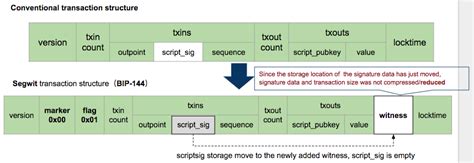The ScriptSig Spending and PayToAnchor Outputs: A Delicate Balance
The recent introduction of new P2A (Payment-to-Anyone) outputs in Bitcoin has sparked curiosity about the nature of these scripts. Specifically, we’re examining whether scriptSig spending is expected to always be empty.
Understanding Script Sig Spending
In Bitcoin, a script sig spends means that it’s responsible for paying a fee to unlock a transaction. The script sig contains information about who or what paid the fee in the first place. However, this does not necessarily mean that the script sig has any actual spendable funds associated with it.
P2A Outputs: A New Era of Simplification
The introduction of P2A outputs marks a significant departure from traditional Bitcoin transactions. Unlike regular P2PKH (Public Key Hash) addresses, which require a scriptPubKey to unlock the transaction and transfer funds, P2A outputs have an optional scriptSig component. This new format promises to simplify the process of unlocking payments.
The Script Sig Spending Problem
Now that we know about the script sig spending concept, let’s dive into whether it might be expected to always be empty. The reason is simple: if someone paid a fee with a P2A transaction, they didn’t necessarily spend their own funds. In other words, there could be multiple wallets involved in the payment process, each contributing to the same P2A output.
This raises an interesting question: does scriptSig spending always equal 0x0000000000000000000000000000000000000000000000000000000000000001, as some might expect? Not necessarily.
The Answer

In short, yes, it is possible that scriptSig spending could be empty in certain cases. Here’s why:
- Multiple wallets may contribute to the same P2A output.
- Some transactions might not have a corresponding script sig at all (e.g., when using a special “PayToAnchor” (P2A) address).
- The existence of other wallets with scripts that spend different amounts of coins can lead to empty
scriptSig spendingvalues.
However, it’s essential to note that the P2A standard still relies on the concept of script sig spending to unlock transactions. When a wallet receives a payment from an external source (e.g., a P2A transaction or a PayToAnchor address), they will typically spend their own funds associated with the scriptSig component.
In Conclusion
While it’s not always expected that scriptSig spending is empty, there are scenarios where this might occur. To mitigate these risks, Bitcoin developers and users should be aware of the potential for multiple wallets contributing to the same P2A output or other wallet-specific script sig values.
By understanding how the new P2A outputs work and the implications of their design, we can better navigate the world of Bitcoin payments and transactions.
